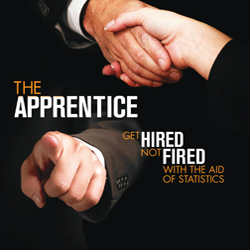
It's all quite exciting, and the buzz is contagious. No wonder they call it 'election fever'. Here at Significance, we've caught a dose of it. You'll no doubt have seen articles on this site by the Polling Observatory and electionforecast.co.uk, explaining how their seat projection models work, while Deirdre Toher and Robin Evans delivered the statistician's verdict on political polling methodologies. But the fever has spread to the April issue of Significance Magazine, where we have two articles on political forecasting.
In the first, Geoffrey Evans and Jon Mellon model the recruitment and retention effects of party leaders to see how their popularity affects party support (free to read until June). Next, we have Gianluca Baio and Roberto Cerina discussing their attempts to predict the outcome of US Senate elections.
We then move from one high-pressure, high-stakes contest to another as Chris Stride and Ffion Thomas try their hand at predicting The Apprentice. Using data from all 10 series of the UK version of the business 'reality' show, they see whether it is possible to forecast the winner, or those who will do well in the competition, based on a candidate’s background and performance. And, sticking with the business theme, Tian Luo and Philip Stark analyse data from a quarterly census of US employment and wages to challenge the notion that restaurants are an inherently risky business.
Meanwhile, researchers from the Human Rights Data Analysis Group discuss their ongoing work to estimate casualties caused by the Syrian conflict, which continues to rage into its fifth year. It is a fascinating look at how statistical methods can be used to calculate the true cost of war at a time when killings cannot be fully documented because of the threat of violence.
It all makes for quite a diverse issue, and one that I hope will inspire plenty of equally diverse entries to our Young Statisticians Writing Competition, organised in partnership with the Young Statisticians Section of the Royal Statistical Society. The closing date for the competition is 30 May 2015, with the winning article set to be published in print and online later this year. Competition rules and links to last year’s winner and runners-up are here.
- Significance Magazine is available in print and online to members of the Royal Statistical Society and the American Statistical Association. It's also available on subscription. Volumes 1 to 10 of our archives are free to read online, but to enjoy the latest magazine content you'll need a membership or subscription.




